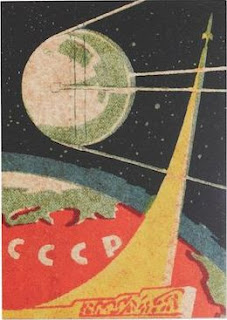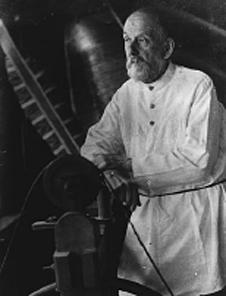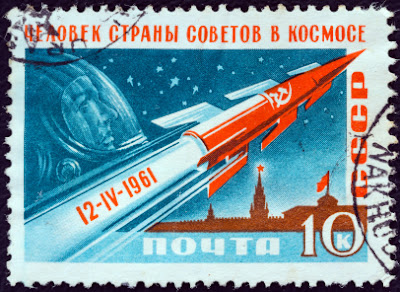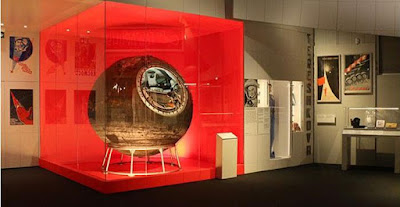Nothing lasts forever. Although
this is anathema to anyone who works in a museum, it is a fact which we are all
more than acutely aware of. The whole purpose of a museum is essentially to act
as a repository of the past for the future. A “time capsule.” The aim of the
museum as an institution is to preserve the material aspects of the past for
future generations to see, study, understand, appreciate, and enjoy. But there
is a popular misconception that museums are static, monolithic things. It’s a
commonly held notion that museums are definitive and unchanging. The idea of
things languishing forgotten in “dusty basements” is a cliché repeated ad nauseam in the Press, yet such
hackneyed old adages often could not be further from the truth. Museums are as
much “time machines” as they are “time capsules.” Museums are constantly
changing. Re-categorising, rearranging, and redefining our understanding of the
past. I was starkly put in mind of this fact, at a very personal level, when I
walked into the Egypt and Nubia Gallery at the British Museum recently.
 |
| Finding archaeology on our doorstep, 1997 |
This gallery was the first major ‘new’
exhibition space which I worked on at the BM back in 1991, and, as such, it has always had
very special memories for me. Over the last year or so certain elements of the
gallery have been completely altered, reflecting new finds, new research, and
changes in interpretation – hence several of the displays which I had first
worked on have now disappeared. I felt rather despondent when I came across
some of the old information panels, which I distinctly recall installing as
new, stacked up for disposal beside a rubbish skip in one of the back areas of
the Museum. As I wandered (feeling slightly bereft) around the gallery itself,
looking for the familiar displays I’d formerly worked on, seeing which had gone
and which remained, I was suddenly struck by that very thought: Nothing lasts forever. And I suddenly found
myself wondering why I’d never thought before to take any photos of those first
‘new’ museum displays which I’d worked on? ... I was then struck, perhaps even more
profoundly, by the thought that it wasn’t as if I hadn’t had ample enough
opportunity to do so – I’d had nearly 25 years in which to do so! … Time waits for no man, indeed.
Working at Hong Kong Heritage Museum, 2008
It is 25 years this month, today on
February 18th in fact, that I first set foot behind the scenes at
the British Museum. I was still at school and I hadn’t even sat my first exam
yet. We’d been told by our teachers that we would have to do ‘work experience’
in the summer term, and we’d each been given a short questionnaire to fill out,
detailing our interests and career aims, if we had any. I was already very
interested in history and I was particularly keen about
archaeology as my main subject area of interest, hence I went to great pains to make
this clear on my questionnaire before handing it in. A couple of weeks or so
later we were each informed of our work experience placements for the summer
term. I eagerly opened mine to see what the school’s Careers Officer had found
for me – expecting / hoping for something in a local museum perhaps? … But
something had clearly gone wrong.
 |
| Holding the famous 'Flood Tablet,' The Epic of Gilgamesh, 2014 (Taipei Times) |
I’d been placed to spend two weeks
with a car mechanic. I had no interest in cars whatsoever and was deeply
baffled as to how my assiduous answers to the questionnaire had landed me this
result. I went to speak to the Careers Advisor, only to be told that: “You need to be more realistic. Nobody ever
really gets a proper job as an Archaeologist.” That distinctly discouraging statement, in
effect, became the spur and motivation to the rest of my life.
From around the age of about nine
years old I’d spent most of my weekends visiting the BM. I was absolutely
fascinated by the vast range and the unfathomable age of the many artworks and
artefacts from seemingly all parts of the globe which were collected in the
galleries of the Museum. Room after room in this great labyrinth of the mind
seemed to stretch on endlessly, packed with curiosities and marvels. In those
days the British Library was still in residence at the BM in Bloomsbury, and
the old illuminated manuscript galleries and the original King’s Library,
filled with old oak display cases, used to mesmerise my mind for hours on end (see here)
... Wouldn’t it be marvellous to work in
a place like this? Imagine spending every day immersed here? … In truth, I
had no real idea of what such a job might actually entail – but it certainly
seemed far more enticing than the prospect of greasy spark-plugs, oily
carburettors, and worn out brake-pads. I wanted to find out. Who dares, wins. So I gave it a shot. I
wrote to each department of the Museum and asked if I could do my work
experience there, behind the scenes.
Working at the Hong Kong Heritage Museum, 2008
 |
| Holding the head of a Terracotta Soldier in Xian, 2007 |
To their credit, I received a reply
from every department. I remember the excitement of opening each letter as they
came in one-by-one. At first I was somewhat disappointed as several, very
courteously, informed me they were either too busy or I was too young, yet
encouragingly almost all said I should apply again in a few years time. But
then I received the first which, unbelievably, offered me an opportunity. I
only needed one, but in the end I had offers from several departments.
Eventually I had to choose which golden opportunity was the one I should take. I decided I’d do my official 'work experience' in the Department of
Egyptian Antiquities, but, as I was eventually aiming to study archaeology at
university, I also chose to volunteer in the Prehistoric and Romano-British
Department in my school holidays too. Rather sadly I had to write back to a
couple of departments to say thank you, but that there just wasn’t enough time
in the school year to visit all of them! … Looking back, this seems
unbelievable to me now – despite the fact that today the Museum has a vast
programme for volunteers, who all do amazing work for the Museum, I sadly doubt
we’d be able to look after a volunteer quite so young in quite the same way nowadays.
Working with the Terracotta Warriors in Xian in 2007
 |
| Behind the scenes, 2014 |
I had two wonderful stints behind
the scenes for my work experience that year. I was introduced to a whole
spectrum of different areas of museum work. I got to help out with
day-to-day gallery maintenance, basic care of the collections, as well as
helping out with object mounting and display work for new exhibitions, such as
the then new Egypt and Nubia Gallery. I also got to chat to curators and conservators,
and find out all about their personal research projects. I got to help out with
answering public enquiries, and even some actual archaeology, in the form of
post-excavation finds processing. But by far the most thrilling aspect of my
first few weeks at the Museum was simply the very real privilege of going
behind the scenes, seeing the stores and actually handling the objects myself.
I learnt so much in such a short space of time, and it’s certainly no cliché to
say that my life was never the same again. I now knew exactly what I wanted to
do with my life.
Working at the National Museum of Korea, 2010 (Chosun Ilbo)
Working at the National Palace Museum, Taipei, 2014 (Formosa News)
Working at the Palace Museum, Beijing, 2007 (Xinhua)
I kept in contact with the friends and
mentors I’d made at the Museum and a few years later, once I was enrolled as an
undergraduate studying anthropology (with as much archaeology as I could add
in) I returned to the BM as a regular volunteer, helping several days a week.
Just before I completed my degree I was lucky enough to join the staff
full-time, and since then I have moved through a number of different
departments and roles in the Museum. In doing so, I have managed to gain a very
broad and yet detailed knowledge of the Museum and its collections (see here). I’ve looked
after many students and volunteers in that time, which, having begun as a
volunteer myself, I’ve always found particularly rewarding – to see in the eyes
of others the wonder and enjoyment which one can experience from that hands-on
connection to the past which comes from working within a museum is priceless, a
reward in itself. I’ve done many other interesting and unusual (as well as some
distinctly daft) things during my time at the Museum. For instance, helping to get the latest, most recently excavated Romano-British find connected to
gladiatorial combat in the UK into our then current major exhibition, Gladiators and Caesars (you can read
more about that find here). I was also persuaded to dress up in full
replica gladiatorial armour for the opening event of this same exhibition, at which I
also met the actor, Mark Rylance (see here).
"We who are about to die ..." - I'm the one with the red shield, 2000
Working in the Roman-Britain Gallery, c.1997
Perhaps most fortunately of all
though, largely due to my present role in the Museum, I’ve been lucky enough to
travel and work in other museums overseas for extended periods. In this way, I
have made friends and connections across the world, and benefited from that
exchange of knowledge. Museums are unique – but essentially, for me, the most
important thing about museums, whichever museum you go to, is that they are all
institutions which are founded on that same selfless ethos which characterises
all proper museum work and all true museum workers: nothing lasts forever. Hence we must do all we can to preserve as
much as we can for future generations. Museums last longer than any of us. The
knowledge and interpretation of the objects with which we work will never
remain the same forever. Museums evolve and change with time, but what remains
essential is the memory, the wonder, and the interest which they encapsulate
for everyone. As a guiding ethos, this is something which I hope will last
forever.
Working at the National Museum of Singapore, 2015
Interview at La Fondation Pierre Gianadda, Switzerland, 2014 (Canal 9 Valais)
~
An Article I wrote for the Museums + Heritage Advisor, 2013
~
Celebrating another milestone - this is also my 100th post on 'Waymarks'

































